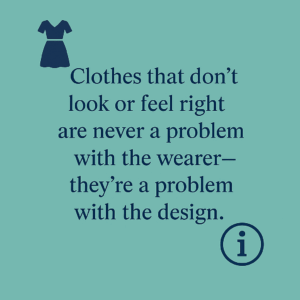It’s not you, it’s the design: What a dress and a stranger taught me about health literacy
While dress shopping with my daughter recently, we found ourselves in a moment of shared joy trying on dresses and stepping out of our change rooms to admire each other’s choices. As I stood inspecting a dress that didn’t quite feel “right,” a kind stranger offered a compliment. I responded with hesitation, pointing out the features I felt weren’t flattering.

She said something that made me smile, then pause and think:
“Clothes that don’t look or feel right are never a problem with the wearer. They’re a problem with the design.”
It was a moment of unexpected wisdom, and it got me thinking about health literacy (of course!).
The Health Information “Fit” Problem
Health systems have historically designed information with a one-size-fits-all mindset. Pamphlets, info sheets, websites, and forms are created with the assumption that people will adjust themselves to fit the information. Or someone else will tailor the information to their needs.
But when health information doesn’t make sense,
when it feels overwhelming or hard to understand,
it’s really not the fault of the person trying to understand it.
It’s a design problem.
Reframing the Blame
Just like a dress that pinches or hangs awkwardly, health information that confuses or excludes isn’t a reflection of the person receiving it. It’s a reflection of how it was made, and who it was made for.
We need to stop hoping that people will “try harder” to understand. We need the systems and services to design better.
What Better Design Looks Like
- Inclusive communication that respects diverse ways of understanding and expressing.
- Co-designed resources created with, or with feedback from, people who will use them.
- Multiple formats to meet different needs: visual, audio, easy-to-read, translated.
- Clarity and clarification in every document and interaction.
Rethink and Reframe

October is Health Literacy Month, so let’s rethink the way we talk about accessible formats for health information. It’s time to stop trying to alter people to fit the message and start tailoring the message to fit the people.
When something doesn’t feel right ad make sense, it’s not you. It’s the design.
Acknowledgement: Written with AI support